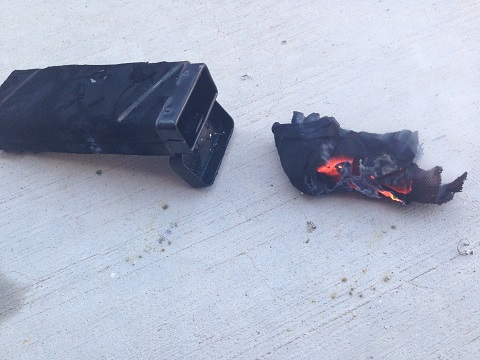 How does char cloth work and how do you make it?
How does char cloth work and how do you make it?
As we saw in the article on How to Build a Fire, there are a few key components to make a fire, and all of them have to work or you’ll be cold and getting angry stares from your shivering girlfriend. Or worse, you may find yourself stuck in the wilderness without a way to boil your water or cook your food.
In order to make a fire, it’s more than just making a spark from a magnesium firesteel, fire piston, flint and steel, or a flame from a lighter. You need that ignition source to easily catch on to something that’ll burn long enough for the kindling to catch, which is supposed to burn long enough for your fuel wood to burn. That something is called Tinder.
The components of a good tinder are:
- you have it with you or can find it when you need it
- it catches fire easily in whatever weather or environment you’re in
- it burns long enough to catch your kindling on fire and can be placed to do so
Sometimes the tinder you can find in the wild isn’t suitable for starting easily with a spark – and sometimes a spark is all you have. One of the best tinders for all this is called Char Cloth. Technically, char cloth is an addition to your tinder bundle but we’ll go into that in a sec. It’s definitely something that you should have in on your bug out bag list.
So what is char cloth?
Char cloth is an organic material (like cotton) that has been heated enough that all (most) of the gasses inside have left but has been protected from burning itself up. This process is called pyrolysis.
There’s a lot of science-y ways to explain what’s going on but you can read those if you just search for the term pyrolysis or thermolysis. Since most of you aren’t scientists or chemists, I’ll go through the light explanation. It’s a super-easy concept and project but the chemical stuff is kinda whack.
When something burns, it’s actually a chemical reaction with oxygen or a similar gas. When something like wood or cotton burns, chemicals like carbon monoxide, hydrogen and carbon dioxide are released into the air. This is called gasification. This is how a gasifier works. I have an article for later that goes into how you can use a gasifire to collect those gasses to run generators or even vehicles. A char cloth is just a product of that same process.
If you heat up something like cotton to a certain point and don’t let oxygen into the area for it to burn, the gasses will be released but the material itself won’t combust. That’s essentially all you need to do to make char cloth in theory, but let’s look at how you’d actually do it. As they say, “In theory, theory and practice are the same thing; in practice, they’re not.”
How do you make charred cloth?
The simplest prepper method of making char cloth is to take something like pieces of cotton from a t-shirt or old jeans and put it into a small tin, like an altoids tin. You don’t need to use an altoids tin though, you could use a tuna can, coffee can, or whatever, as long as you can seal it fairly well after you put the material in it and it won’t burn itself up.
I wanted to make some char cloth just using stuff I had lying around the house so instead of an altoids tin (which I have but I’m using it on my motorcycle EDC kit), I used a tin I got from Starbucks the other day.

You need the gasses to escape from the inside after they’re released from the cotton, so you need to poke a small hole in the tin with something like a nail. You don’t want it too big though, or oxygen will get in and your fabric will catch fire.

I grabbed an empty can of chopped clams that had some old bacon grease in it and tossed in a strip of an old cotton black bandana that I had lying around for a wick. Then I cut a strip of the bandana about as wide as the tin is long, rolled it up and put it into the tin. I lit the bacon grease candle and set the tin on top, using an old rod to keep it at the right distance.
You can see the smoke coming out of the end and the hinge. If you put a flame to it, that smoke will catch fire. This is essentially a mini-gasifier. That gas is flammable enough to be used in a generator or carb for an engine.
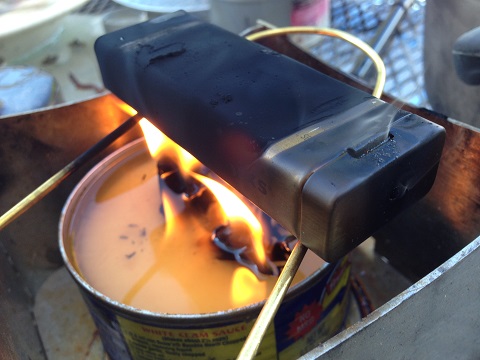
Then, you just cook the tin in a fire for a while until you don’t see any more smoke coming out, flip a few times to get all sides, and you’re done. Depending on how much stuff you have, how big your tin is and how hot your fire is, it should take anywhere from 15-45 minutes. I’ve never really timed it so that’s just a guestimate.
Here’s what it looked like when it came out. As you can see, the end of it isn’t quite charred. That’s not really an issue if you have a large enough piece because it can help catch the rest of your tinder since that end will burn with a flame.
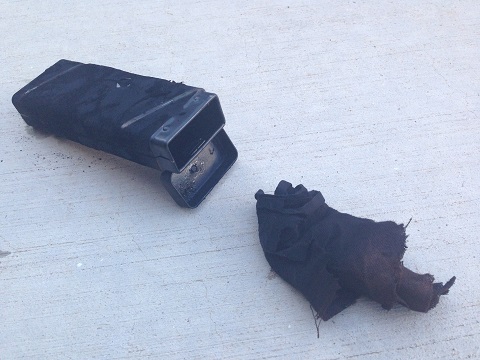
Obviously, the proof is in the pudding so I took out my handy-dandy Aurora fire starter that I reviewed previously that I keep in my pocket as a part of my EDC kit, and it lit after one spark.
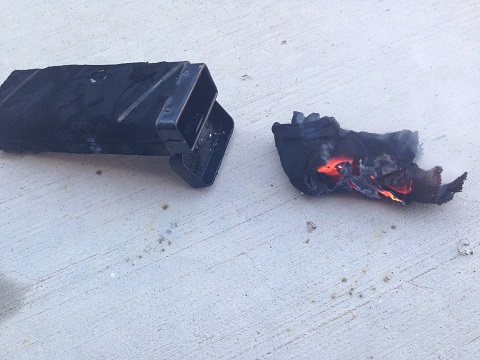
It actually worked so well that I couldn’t blow the thing out so I had to stuff it back into the tin to get it to stop burning.
It helps if you us a looser-woven fabric than a tighter one because they have more of a surface area to light but a bandana/handkerchief works fine.
That’s really all there is to it. You an experiment with different types of fabrics and different temperatures and times to heat it up but it’s not really all that hard. You don’t even need to use cloth. Almost any organic material should work, such as punky wood or plant fibers. You just gotta get all the gasses out without burning it.
For those of you who’d rather see it done instead of just reading my elegant word-smything, here’s a video:
Char cloth vs other tinder?
Char cloth catches so easily that just one spark will usually catch, so not only can you place it right under your tinder bundle, things like a breeze or damp air shouldn’t be a problem. It will burn usually for a few minutes too, giving you enough time to catch. Because it doesn’t give off a flame though, char cloth isn’t gonna really be able to catch kindling.
Other tinder like dry leaves, grass, cat tail fluff, etc burns pretty well but isn’t always easy to catch from a spark. Especially if it’s damp out.
Putting them together though, makes a powerful combination.
How to use char cloth to start a fire.
As I just mentioned, char cloth catches easily but it won’t burn hot enough to catch twigs on fire unless they’re REALLY tiny. You also probably won’t have an abundance of char cloth in your kit. It will, however, burn enough to catch other tinder on fire that will. By making a tinder bundle out of dry material that burns quickly and then putting the char cloth in side it, you make an easy-to-light pile of stuff that’ll burn hot enough to catch twigs.
Here’s a quick video for an example:
Having a successful fire started is all about an escalation of things. The spark catches the char cloth. The char cloth catches the rest of the tinder. The tinder then catches your kindling. The kindling catches the fuel wood. The fuel wood then heats up your honey. Your honey then keeps you warm.
 BTW, at the moment, Survival Life is giving away a free Everstryke match
BTW, at the moment, Survival Life is giving away a free Everstryke match for just shipping costs that would be very useful even if you didn’t have char cloth available or wanted to save it. Unfortunately they don’t have just a ‘buy now’ button so you have to sit through a stupid video before you can get it, but it’s worth letting it run for a few minutes so you can get one. They’re also sending out other goodies with it at the moment. Here’s what they say you get:
- Has it all: Contains the ferro rod and wick in one all-inclusive fire starting kit that fits conveniently in your pocket.
- Strikes hot, burns hot: Ferro rod strikes at over 3000 degrees and flame burns at over 600 degrees Fahrenheit
- Long lasting: Each match is capable of 15,000 long burning strikes. Built in O-Ring keeps fuel from evaporating indefinitely ( A Zippo can run dry in as little as a week!)
- Lights in ANY condition: Will start a fire in the rain sleet or snow
- Easy to use: If you can strike a match you can start a fire (and this one won’t burn your fingertips)
- Ultimate survival tool: In a survival situation a fire is life, this tool will make sure that you can start a fire whenever, wherever you need it.
- BONUS #1 Get a new book Ultimate Survival Skills FREE.
- BONUS #2 Get a FREE 2 Hour Survival Class.
Click here to sign up for the free everstryke match.

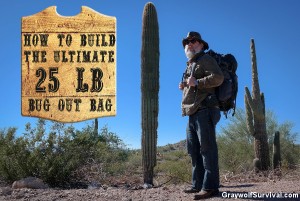


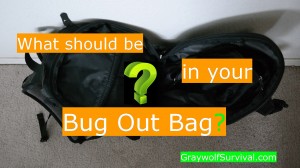


Thanks, Graywolf. Looks like I will have to give making charcloth a try.
So far I have relied on a Swedish fire steel and petroleum jelly-soaked cotton balls, which are great tinder, but do require petroleum jelly. I would still prefer them, but it is important to know how to do without.
I had great luck on a recent camping trip in Idaho. We had two nights of fairly serious rain, connected by a day of off and on drizzle. The cotton balls worked great for getting the fire going in the morning. I found plenty of dry pine needles around the bases of trees, and tiny twigs about the diameter of pencil leads, and bigger which were less than pencil diameter. Also some dry bark from the undersides of logs.
They were plenty to get a fire going when added slowly to the cotton balls, and with kindling made by batoning wet wood with a KaBar Cutlass Machete (great tool by the way, and I recommend them highly.) Dry pine needles are great, especially the long ones. I discovered that they just need to be added slowly, and blown on. Even in wet weather there was no problem getting a fire going.
Being able to baton small logs can be the difference between getting a fire going and not- as you said, the tiny stuff is not enough to get big stuff going, especially when the big stuff is wet. There has to be something in between.
I also tried making firesticks for the first time on that trip by slicing slivers off the kindling, leaving them attached at one end. I was clumsy enough to slice a lot right off, but left enough on to make decent firesticks. What a difference in getting them to light. Wow.
Look on the underside of trees when its pouring for the dead branches…. Sometimes they are higher up, depending on where you are and how many before you. …
I wanted to thank you for all of your advice and ideas. I also wanted to thank you for your service to this country.
Added to my favorites menu.
This is definitely the go to stuff to use I keep a good supply of it on hand and have it stashed in my many caches I have in/ on the area I always go to to keep up my bug out skills.. great stuff and excellent article,